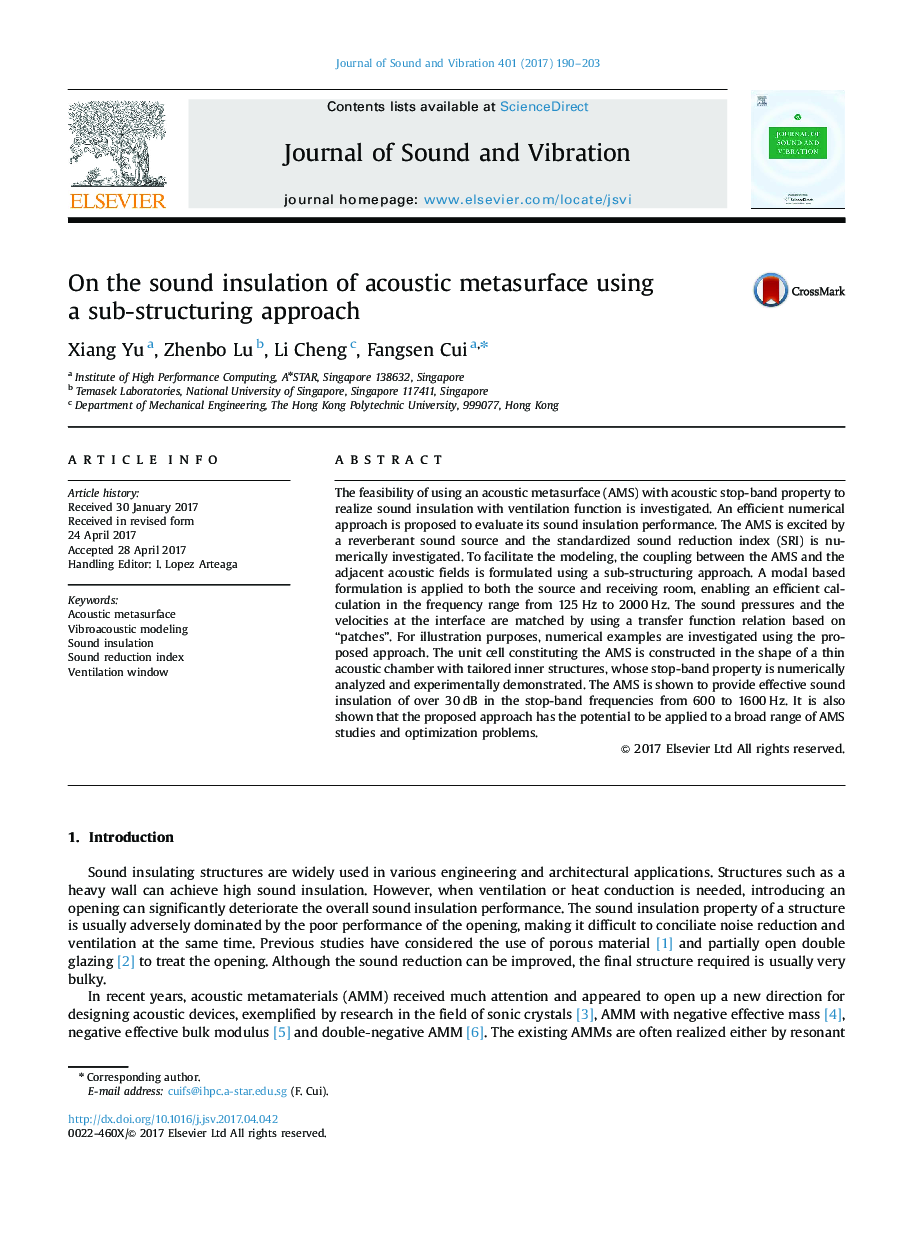| Article ID | Journal | Published Year | Pages | File Type |
|---|---|---|---|---|
| 4924045 | Journal of Sound and Vibration | 2017 | 14 Pages |
Abstract
The feasibility of using an acoustic metasurface (AMS) with acoustic stop-band property to realize sound insulation with ventilation function is investigated. An efficient numerical approach is proposed to evaluate its sound insulation performance. The AMS is excited by a reverberant sound source and the standardized sound reduction index (SRI) is numerically investigated. To facilitate the modeling, the coupling between the AMS and the adjacent acoustic fields is formulated using a sub-structuring approach. A modal based formulation is applied to both the source and receiving room, enabling an efficient calculation in the frequency range from 125Â Hz to 2000Â Hz. The sound pressures and the velocities at the interface are matched by using a transfer function relation based on “patches”. For illustration purposes, numerical examples are investigated using the proposed approach. The unit cell constituting the AMS is constructed in the shape of a thin acoustic chamber with tailored inner structures, whose stop-band property is numerically analyzed and experimentally demonstrated. The AMS is shown to provide effective sound insulation of over 30Â dB in the stop-band frequencies from 600 to 1600Â Hz. It is also shown that the proposed approach has the potential to be applied to a broad range of AMS studies and optimization problems.
Related Topics
Physical Sciences and Engineering
Engineering
Civil and Structural Engineering
Authors
Xiang Yu, Zhenbo Lu, Li Cheng, Fangsen Cui,
